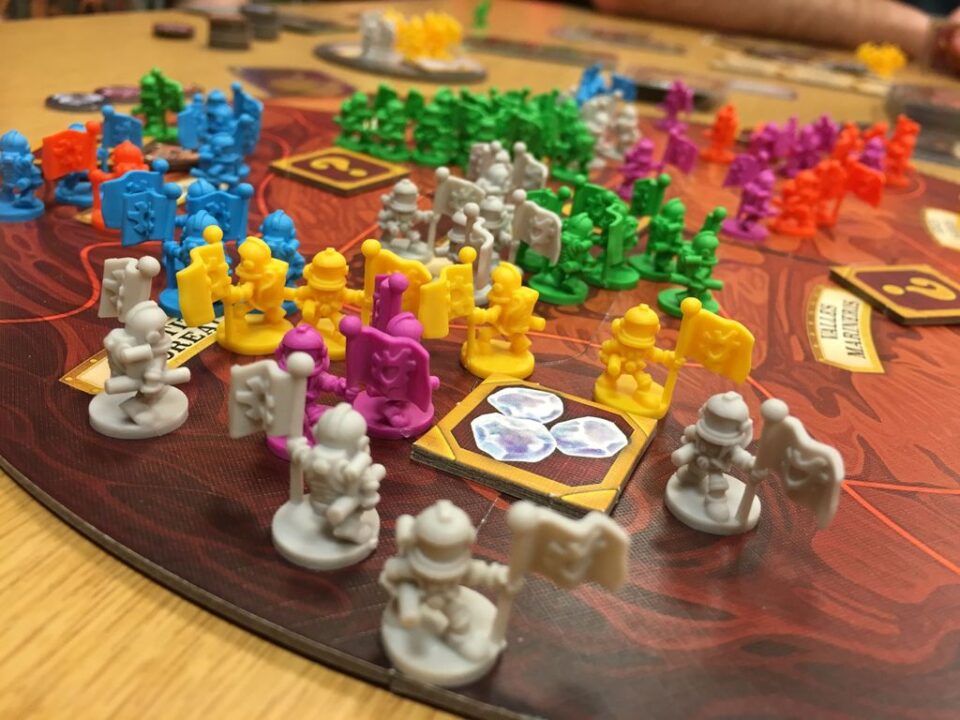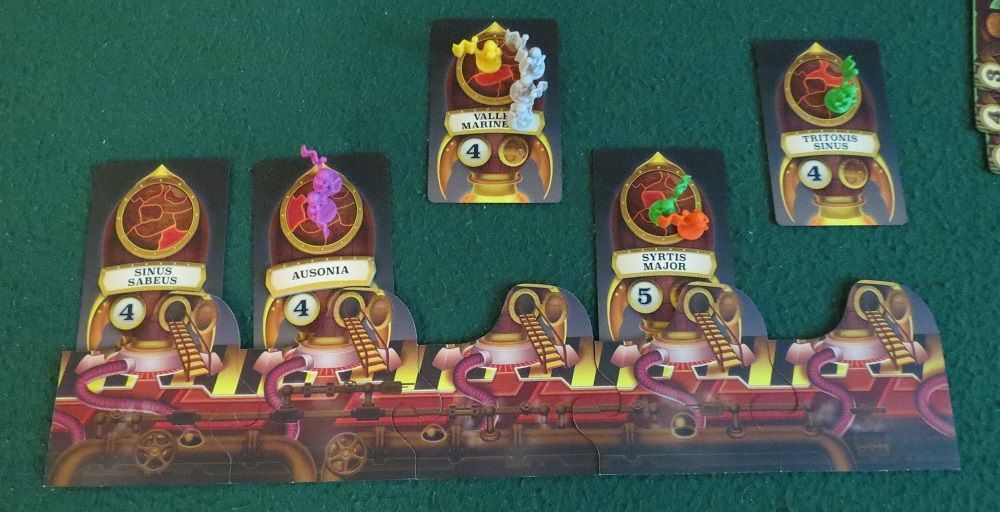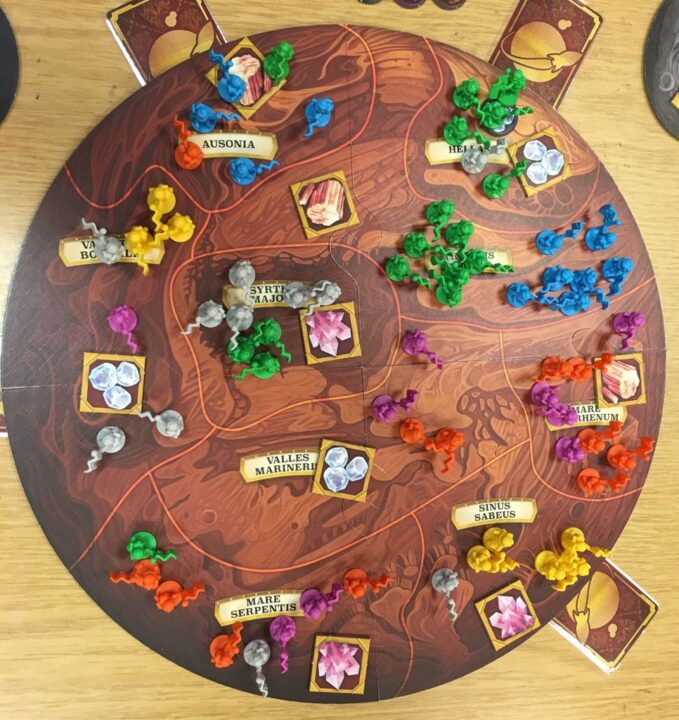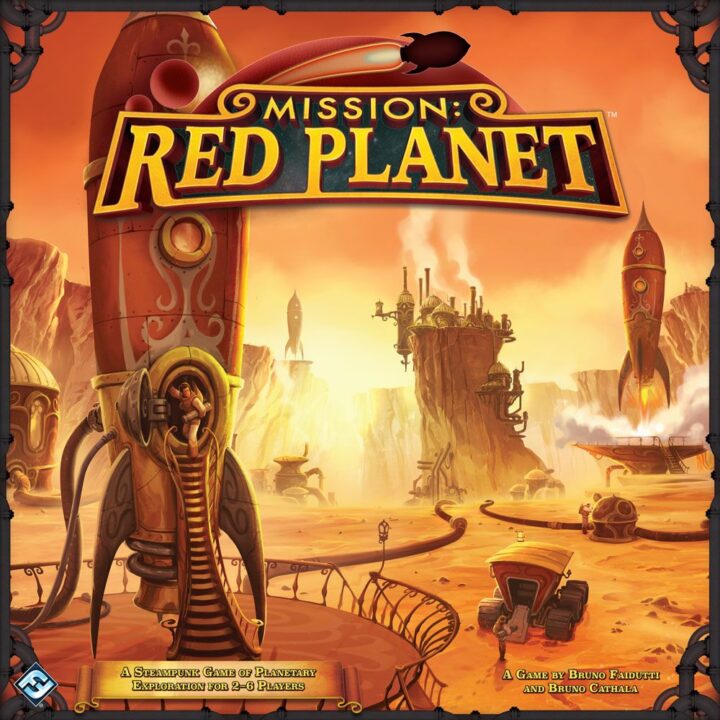Overview
Welcome to the steampunk-infused territories of Mars, brought to the tabletop in the celebrated board game Mission: Red Planet (Second Edition). This review will launch you into the game’s mechanics, the integral player interactions, and the sensational satisfaction that comes with mission achievements. Prepare to juggle strategy and cunning social maneuvers as we jet through the orchestration of astronauts and unveil whether this galactic venture is worthy of table space in your gaming capsule.
How It Plays
Embarking on the journey of Mission: Red Planet (Second Edition) immerses players in the role of space tycoons in steampunk-era Mars. Complex patterns of play unfold, captivating participants in intriguing scenarios.
Setting Up
Setting the stage requires distributing a fleet of ships and placing the beautiful, seemingly untouched Mars board at the center. Each player chooses a corporation and receives corresponding astronauts and a hand of character cards, crafting the stage for space dominance.
Gameplay
Through area control and secret objectives, players harness the power of mission cards and eight beautifully designed role cards, launching astronauts and sabotaging competitors. Through a subplot of strategic depth, phases sequence of card selection, resolution, and influence over Martian territories.
Winning the Game
Victory is obtained by securing the most powerful hold over Martian lands and fulfilling secret missions. The game culminates in a climactic tally of every player’s strategic prowess completed by the mystique of revealed objectives, designating a champion by way of resourceful planning and daring feats.
Want to know more? Read our extensive strategy guide for Mission: Red Planet (Second Edition).
Unleashing the Wonders of Game Mechanics & Strategies
Whenever I dive into a new board game like Mission: Red Planet (Second Edition), the anticipation of discovering new strategies in tandem with unique mechanics always adds to the initial allure. I recall the first time I deployed my astronauts across the sculpted Martian landscape; the game’s blend of role selection and area control mechanics intertwined beautifully. Strategizing Coup D’états, as a subheader, perfectly captures my first ploy to execute a savvy move that left my opponents flabbergasted—anticipating my rivals’ roles became a game within the game itself.
Strategizing Coup D’états
The fabric of strategy is intricately sewn with each decision in Mission: Red Planet. Transitioning through each phase requires foresight—choosing whether to accumulate resources early on, or pivot to a more aggressive oppositional disruption. Each session brought fresh insights; including one where I manipulated the travel phases to my advantage, securing key areas before my friends had the chance to react—an unexpected but delightful result of intertwined game mechanics and situative strategy.
Making Bold Moves
Another session saw me tempt fate with the rarer yet potent explosives role; a calculated risk resulted in a blitz of new opportunities. Such boldness helps to shift the board’s dynamic—rewarding not only strategic adaptation but also audacious decision-making.
Exploring tactical depth such as this leads me naturally to yearn for the enlivening hustles around the table—the very essence of Player Interaction Dynamics, which, trust me, takes the Martian experience to even greater heights.

Thriving on Thrilling Connections
Covert Alliances and Rivalries
The ebbs and flows of camaraderie and competition in Mission: Red Planet (Second Edition) infuse energy into every session. Recollecting the hushed whispers of quick alliances at my table, the game creates a narrative that encourages dynamic interactions.
Strategic Sabotage
Moreover, the game cleverly weaves in the risk of sabotage, a mechanic that keeps players on the edge of their seats—and indeed, during one memorable game night, a well-placed ‘Explorer’ swung the board state heavily, triggering laughter and revenge-fueled strategies for subsequent turns.
Keep your friends close, and your Martian nemeses closer: this is the heart of player interaction in Mission: Red Planet. Next up, let’s rocket into the ‘Mission Fulfillment Excitement’.

The Thrill of Martian Exploration
The completion of missions in Mission: Red Planet (Second Edition) is particularly thrilling. Assigning astronauts, choosing a destination, and gradually unveiling your master plan—it’s exhilarating! Each round comes with that suspenseful reveal of what areas are controlled or what secret missions have been fulfilled.
Risky Ventures
Taking risks often leads to satisfying rewards. Echoing my own thrill when a risky assignment paid off, it endorses strategic daring.
Strategic Payloads
Adaptability is key. Responding to other players’ launches can promote unexpected victors—a personal highlight. Tactically rich and unpredictable, I heartily recommend diving into this Martian conquest.

Conclusion
As we wrap up this review of Mission: Red Planet (Second Edition), it’s evident that the game succintly marries strategic depth with lively player interaction. Its ability to transfix and engage, while provocating tactical decision-making amidst an amiable camaraderie, is a signature trait. The thrill of suspense as missions come to fruition adds zest to an already zealous contest, capturing the allure of space exploration. Such dimensions of play endorse Mission: Red Planet as a game not just vast in the spatial theme, but monumental in participatory experience, definitely cementing its place on the gaming shelf.


